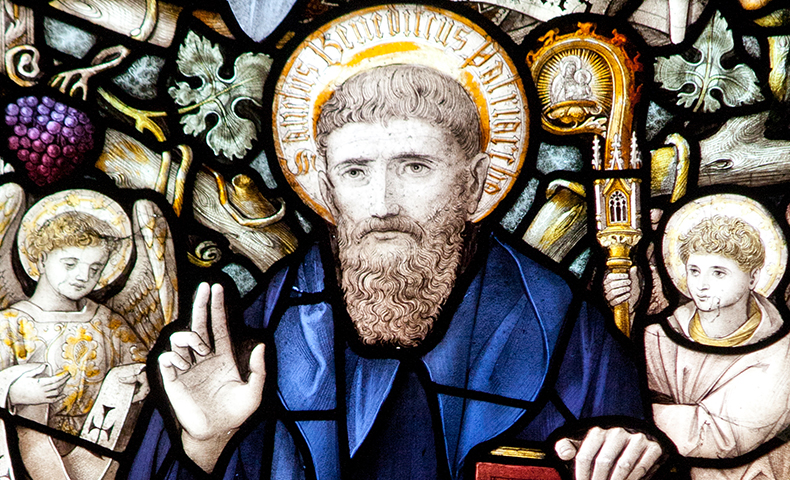Saint Benedict, Saint of the day for 11 July

(c. 480 - c. 547)
The history of San Benedetto
It is unfortunate that no contemporary biography was written of a man who exercised the greatest influence on monasticism in the West. Benedetto is well known in the subsequent dialogues of San Gregorio, but these are sketches to illustrate miraculous elements of his career.
Benedetto was born into a distinct family in central Italy, studied in Rome and at the beginning of his life was attracted to monasticism. At first he became a hermit, leaving a depressing world: pagan armies on the march, the Church torn apart by schism, people suffering from war, morality at a low level of reflux.
Soon he realized that he couldn't live a hidden life in a small town better than in a big city, so he retired to a cave on top of the mountains for three years. Some monks chose Benedict as their leader for a while, but found his rigidity not for their taste. However, the transition from the hermit to community life had begun for him. He had the idea of bringing together various families of monks into one "Great Monastery" to give them the benefit of unity, fraternity and permanent worship in a home. Eventually he began building what would become one of the most famous monasteries in the world: Monte Cassino, which dominated three narrow valleys that ran towards the mountains north of Naples.
The Rule that developed gradually prescribed a life of liturgical prayer, study, manual work and coexistence in community under a common abbot. Benedictine asceticism is known for its moderation and Benedictine charity has always shown concern for people in the surrounding countryside. During the Middle Ages, all monasticism in the West was gradually brought under the Rule of San Benedetto.
Today the Benedictine family is represented by two branches: the Benedictine Federation which includes the men and women of the Order of San Benedetto, and the Cistercians, men and women of the Cistercian Order of Strict Observance.
Reflection
The Church has been blessed through Benedictine devotion to the liturgy, not only in its true celebration with rich and adequate ceremony in large abbeys, but also through the academic studies of many of its members. The liturgy is sometimes confused with guitars or choirs, Latin or Bach. We must be grateful to those who preserve and adapt the true tradition of worship in the Church.